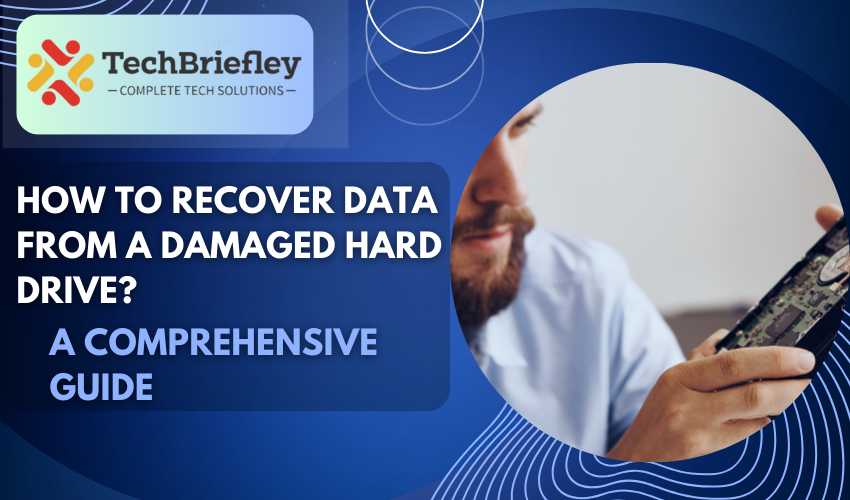Data loss can be a devastating experience, especially when it occurs due to a damaged or failed hard drive. Whether your hard drive has been dropped, exposed to water, encrypted, scratched, or simply stopped working, there’s hope for recovering your precious data. In this comprehensive guide, we will explore the various methods and techniques to retrieve data from a damaged or failed hard drive. We’ll also address common questions, such as the cost of failed hard drive data recovery and how to recover data from an unformatted hard drive.
Data Recovery from Failed Hard Drives
1. Assessing the Extent of Damage
The first step in the process of recovering data from a failed hard drive is to assess the extent of the damage. Determine whether the damage is physical or logical. Physical damage may involve a dropped hard drive, water damage, or scratches on the disk platters. Logical damage, on the other hand, may result from file system corruption, accidental deletion, or a virus attack.
2. Stopping Use of the Hard Drive
Once you’ve identified the issue, it’s crucial to stop using the damaged hard drive immediately. Continued use could worsen the damage or overwrite the data you’re trying to recover. Disconnect the hard drive from your computer or device to prevent further damage.
DIY Data Recovery Methods
3. Checking Connections and External Enclosures
If you suspect a problem with your external hard drive, ensure that the connections are secure. Sometimes, loose cables or faulty enclosures can mimic hard drive failure. Try connecting the drive to a different computer or using a different USB cable to rule out these issues.
4. Using Data Recovery Software
For logical damage or accidental file deletion, data recovery software can often do the trick. There are various reputable data recovery tools available, such as EaseUS Data Recovery Wizard, Stellar Data Recovery, and Recuva. Install one of these programs on a working computer, connect the damaged hard drive externally, and follow the software’s instructions to recover your data.
5. Freezing the Hard Drive (As a Last Resort)
In some cases of physical damage, freezing the hard drive can temporarily repair it, allowing for data recovery. Place the damaged hard drive in a sealed plastic bag and then in another bag with a paper towel. Put it in the freezer for a few hours, connect it to a computer, and attempt to recover your data quickly before the drive warms up.
Professional Data Recovery Services
6. Consulting a Data Recovery Specialist
When DIY methods fail or if your hard drive has severe physical damage, it’s time to consult a professional data recovery specialist. These experts have specialized tools and cleanroom environments to deal with physically damaged drives. They can disassemble the hard drive, repair or replace damaged components, and recover your data.
7. The Cost of Data Recovery
The cost of professional data recovery services can vary widely depending on the severity of the damage and the amount of data you need to recover. Prices may range from a few hundred to several thousand dollars. Most reputable data recovery companies provide a free evaluation and quote before proceeding with the recovery.
8. Ensuring Data Security and Privacy
When choosing a data recovery service, prioritize companies with a track record of data security and privacy. You are entrusting them with sensitive information, so it’s essential to select a provider that adheres to strict security protocols and confidentiality agreements.
Specific Data Recovery Scenarios

9. Data Retrieval from an Encrypted Hard Drive
If your hard drive is encrypted, you’ll need to have the encryption key or password to access your data. Once you have the necessary credentials, you can use data recovery software or consult a professional data recovery service to retrieve your files.
10. Recovering Data from a Scratched Hard Drive
Recovering data from a scratched hard drive can be challenging, as physical damage to the platters can be severe. A professional data recovery service with specialized equipment may be your best option in this scenario.
11. Rescuing Data from a Water-Damaged Hard Drive
Water damage can corrode the internal components of a hard drive, making data recovery difficult. It’s essential to consult a data recovery specialist promptly, as delays can result in further damage.
12. Data Retrieval from a Dropped Hard Drive
A hard drive that has been dropped may suffer from physical damage to its internal components. Similar to water damage, it’s best to seek professional help to retrieve data from a dropped hard drive.
13. Data Recovery from a Wiped Hard Drive
If your hard drive has been intentionally wiped or formatted, the chances of data recovery are lower. However, data recovery specialists may still be able to retrieve some or all of the data, depending on the extent of the wiping.
14. Recovering Data from a Dead Laptop
To recover data from a dead laptop, you can either remove the hard drive and connect it to another working computer using an external enclosure or consult a professional data recovery service.
Also read: Steps to boost your Wi-Fi signals
Frequently Asked Questions
How much does it cost to recover data from a hard drive?
The cost of data recovery can vary widely, ranging from a few hundred dollars to several thousand dollars. It depends on the severity of the damage and the amount of data you need to retrieve from your hard drive. Many data recovery companies offer free evaluations and provide cost estimates before proceeding with the recovery.
How to recover data from an unformatted hard drive?
You can recover data from an unformatted hard drive using data recovery software. These tools can often restore files even if the drive’s file system has been corrupted. Follow the software’s instructions to scan the unformatted drive and retrieve your data.
How to recover data from a hard drive?
To recover data from a hard drive, follow these steps:
a. Identify the type and extent of damage.
b. Stop using the hard drive immediately to prevent further damage.
c. Try DIY data recovery methods if the damage is not severe.
d. Consult a professional data recovery specialist if DIY methods fail or for physically damaged drives.
Conclusion
Recovering data from a damaged or failed hard drive can be a challenging process, but it’s often possible with the right approach. Whether you choose to attempt DIY methods or seek professional help, the key is to act quickly and prioritize the safety of your data. Remember to regularly back up your data to prevent future data loss incidents, and always handle your hard drives with care to minimize the risk of damage.

